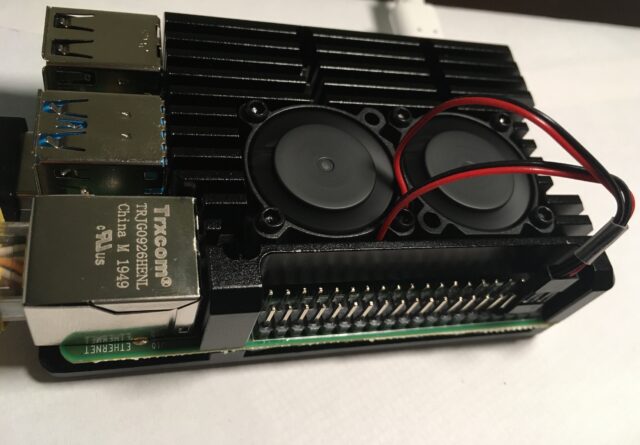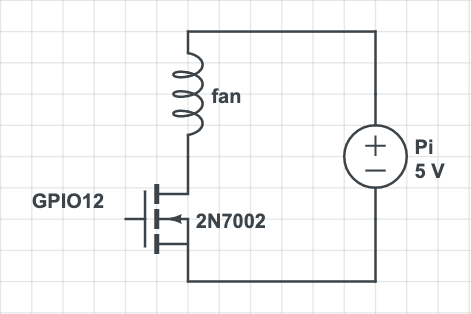Several Raspberry Pi retailers are selling a CNC’d aluminium heatsink case for the Raspberry Pi, also known as the “Armour” case. While I actually wanted the passively cooled case (i.e. just a big heatsink), somehow I wound up with the dual-fan case instead.
The fans terminate in a combined dual-0.1″ plug, which they recommend connecting across the 5V and ground pins at positions 4 and 6 on the Pi’s GPIO header. This works fine, but the fans are on all the time, which I didn’t want (they’re not perfectly silent, and they’re also drawing power despite the Pi being relatively cool).

It would be better to switch the fans on when the Pi gets above a particular temperature – and this post explains how. Thanks to Jim for supplying hardware, knowledge and soldering skills to make a solution possible.
Software
From the software side, this is easily achieved. Some other sites recommend writing a userspace daemon in Python, but we can simply add a device-tree overlay to have the kernel do the monitoring and switching:
# in /boot/config.txt dtoverlay=gpio-fan
By default, this sets GPIO12 high when the Pi hits 55C, and turns it off once the Pi gets below 45C. Theoretically, this also supports hardware PWM to control the fan speed, although the speed isn’t configurable through the overlay.
Hardware
So, how do we wire things up so that when GPIO12 goes high, we can supply the fans with the power they need? GPIO12 only supplies 3.3V and at most 16mA, so connecting the fans directly will damage the Pi. The hard-to-find gpio-fan overlay source code suggests using a 2N7002 N-MOSFET like so:
However, this doesn’t work for the dual-fans. And while it might work for single fans, there are still some additional improvements that can help protect the Pi.
Continue reading “Circuit for temperature-controlled dual-fan Raspberry Pi case”

